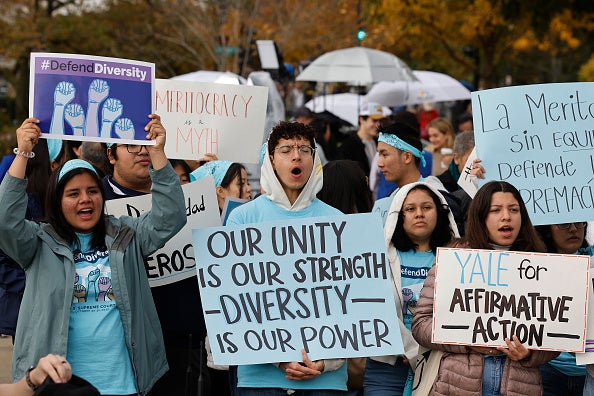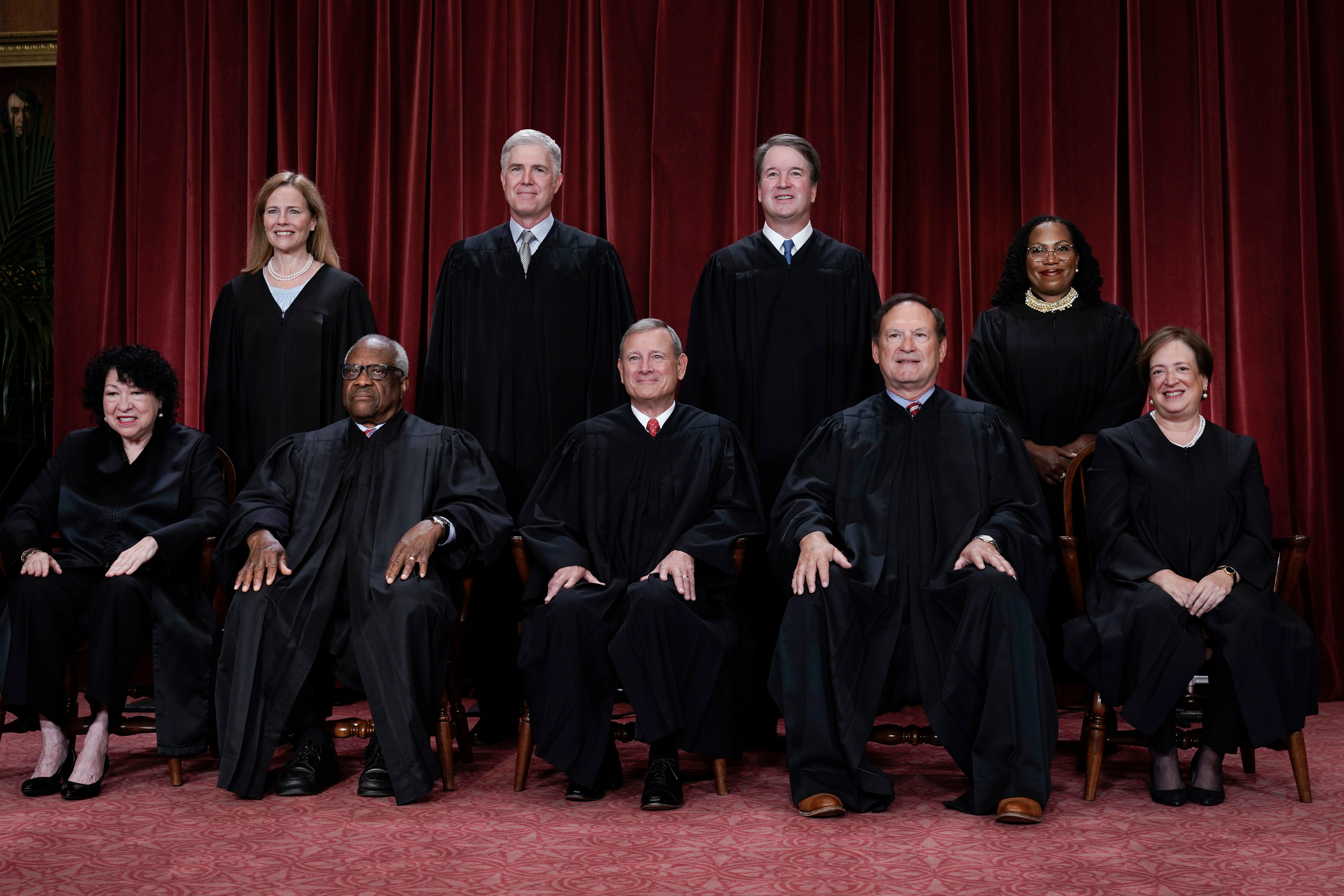Supreme Court strikes down affirmative action, banning colleges from factoring race in admissions
In a 6 -3 decision, the Supreme Court ruled higher education institutions may not consider race as a factor in admissions
The Supreme Court ruled that private and public colleges and universities may not consider race as a factor in admissions, striking down the precedent set in the landmark case Grutter v Bollinger (2003).
For more than 20 years, colleges and universities have used affirmative action to help establish a diverse group of accepted students, which contributes to a more positive education experience.
But now, higher education institutions will no longer be allowed to consider race as a factor in admissions. Instead, students who wish to have their race or culture considered in their application will have to volunteer the information in their personal essay.
The new ruling is a result of the consolidated cases Students for Fair Admissions v University of North Carolina and Students for Fair Admissions v Harvard College.
In a 6-3 decision, the conservative majority of the Court ruled in favor of Students for Fair Admissions (SFFA) in the case concerning the University of North Carolina.
The same majority sided with SFFA in the case against Harvard, with Justice Ketanji Brown Jackson reclusing herself due to her ties to Harvard.
The case
The ruling was based on a pair of cases brought forth by the anti-affirmative action organisation SFFA, which is headed by conservative legal strategist Edward Blum.
Since its founding in 2014, SFFA has filed over 20,000 lawsuits on behalf of students and their parents who claim students did not get accepted to a selective university due to their race.
In Students for Fair Admissions v Harvard College, Mr Blum represented a group of anonymous Asian American students who were rejected from Harvard College and claim it was because of their race.
Though Harvard is a private university, it receives federal funding making it subject to Title VI of the Civil Rights Act of 1964, which prohibits racial discrimination.
The students argued that Harvard places a quota on the number of Asian American students it accepts every year thus participating in racial discrimination. Harvard denies this.
In Students for Fair Admissions v University of North Carolina, Mr Blum represented white and Asian American students rejected from the Univeristy of North Carolina (UNC) Chapel Hill who alleged that UNC prioritised race in applications and awarded under-represented minority students.
SFFA claims UNC, a publicly-funded university, violated the Title VI of the Civil Rights Act.

The case drew commentary and criticism from people from both parties.
Concurring opinions
In the majority opinion, Chief Justice John Roberts wrote that the Equal Protection Clause of the 14th Amendment applies “without regard to any difference of race, of color, or of nationality” and therefore must apply to every person.
“Eliminating racial discrimination means eliminating all of it,” Justice Roberts wrote.
“For “[t]he guarantee of equal protection cannot mean one thing when applied to one individual and something else when applied to a person of another color.”
“Both programmes lack sufficiently focused and measurable objectives warranting the use of race, unavoidably employ race in a negative manner, involve racial stereotyping, and lack meaningful end points. We have never permitted admissions programmes to work in that way, and we will not do so today,” Justice Roberts wrote.

While the ruling says race may not be a conscious factor in admissions, it does not prevent universities from considering an applicant’s discussion of how race affected their life “so long as that discussion is concretely tied to a quality of character or unique ability that the particular applicant can contribute to the university”.
In a concurring opinion, Justice Clarence Thomas gave a lengthy history of race-based admissions citing specific statistics from universities that indicate race-conscious admissions take away from a student’s individual value.
Justice Thomas expressed optimism that a student of color can show their capabilities and accomplishments without using race as a factor.
“While I am painfully aware of the social and economic ravages which have befallen my race and all who suffer discrimination, I hold out enduring hope that this country will live up to its principles so clearly enunciated in the Declaration of Independence and the Constitution of the United States: that all men are created equal, are equal citizens, and must be treated equally before the law,” Justice Thomas wrote.
For many years, Justice Thomas has spoken out against affirmative action, though there has been some debate as to whether he benefitted from it when he attended Yale Law School in 1971.
Justice Thomas claimed that being accepted to the school due to his race made him insecure in his technical abilities as a lawyer.
Dissenting opinions
More than 60 individuals and organisations filed briefs in support of Harvard College and North Carolina University, emphasising the detrimental effects that ruling in favor of Students for Fair Admissions would have.
Derrick Johnson, the president and CEO of the NAACP, responded to the ruling saying: “Let me be clear - affirmative action exists because we cannot rely on colleges, universities, and employers to enact admissions and hiring practices that embrace diversity, equity and inclusion.
“Race plays an undeniable role in shaping the identities of and quality of life for Black Americans. In a society still scarred by the wounds of racial disparities, the Supreme Court has displayed a willful ignorance of our reality.
In her dissenting opinion, Justice Sotomayor criticsed the decision writing: “Ignoring race will not equalise a society that is racially unequal. What was true in the 1860s, and again in 1954, is true today: Equality requires acknowledgment of inequality.”
“Today, the Court concludes that indifference to race is the only constitutionally permissible means to achieve racial equality in college admissions. That interpretation of the Fourteenth Amendment is not only contrary to precedent and the entire teachings of our history … but is also grounded in the illusion that racial inequality was a problem of a different generation.”
She added: “Entrenched racial inequality remains a reality today.”
In a strong dissenting opinion, Justice Jackson countered much of the argument Justice Thomas laid out.
“With let-them-eat-cake obliviousness, today, the majority pulls the ripcord and announces ‘colourblindness for all’ by legal fiat. But deeming race irrelevant in law does not make it so in life,” Justice Jackson wrote.
“It would be deeply unfortunate if the Equal Protection Clause actually demanded this perverse, ahistorical, and counterproductive outcome. To impose this result in that Clause’s name when it requires no such thing, and to thereby obstruct our collective progress toward the full realisation of the Clause’s promise, is truly a tragedy for all of us.”
The ruling will likely have repercussions beyond higher education institutions, extending to elementary, middle and high schools as well as workplaces and more as it opens a door for challenges to racial diversity programs.
Join our commenting forum
Join thought-provoking conversations, follow other Independent readers and see their replies
Comments


Bookmark popover
Removed from bookmarks